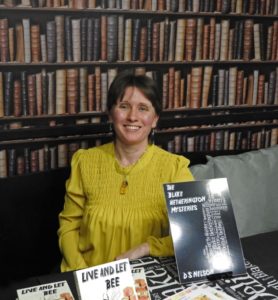 Today I’m pleased to be able to welcome D S Nelson to the blog to talk about her revision process. You can find her First Draft process Here.
Today I’m pleased to be able to welcome D S Nelson to the blog to talk about her revision process. You can find her First Draft process Here.
Her introduction to murder came from Agatha Christie. Christie’s inquisitive Miss Marple of St Mary Mead and very Belgian Poirot with his ‘little grey cells’, captured her imagination from a young age.
As an author of mystery novels I weave facts into my stories to entertain and inform in the true tradition of detective fiction. With a love for fairy tales, myth and fable, it was natural that she began children’s storytelling.
Your first draft has been completed, what state is it generally in?
First of all, thank you so much for asking me to take part in this series, Rebecca. I’m honoured to be here.
My first draft is usually pretty much there, give or take a few thousand words where bits of character or description are needed. There may be some plot holes I will need to go back and fill too or a time line discrepancy but usually I’ve looked at these as I go along.
It really depends over what time period I’ve written the manuscript. If I’ve written it over six weeks (rare but has been known) then I can remember where the plot holes are and go back to them at the time. If it’s taken me longer then I will not necessarily have spotted them myself but that’s where the beta readers come in.
What is the first thing do before you start to revise?
I leave the manuscript for a bit for my subconscious to work on. There’s always that high when you’ve finished a manuscript followed by the ‘everything’s rubbish’ stage. It’s part of the creative rollercoaster. A bit of distance between the writing and myself creates some objectivity.
How do you assess the damage that needs working on?
I read through the manuscript and check for glaring errors, plot holes, characters behaving badly, unbelievable sequences and flesh out descriptions if necessary. I’m not looking for grammar or spelling at this stage but if I find it I obviously correct it.
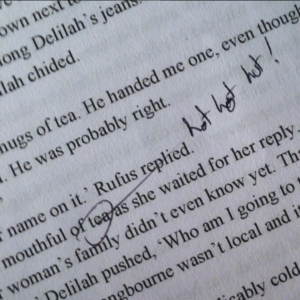 Do you allow anyone to read that very first draft before revisions or can you assess it objectively yourself?
Do you allow anyone to read that very first draft before revisions or can you assess it objectively yourself?
I usually ask my husband to read through the first draft as he can spot a flaw in the storyline at hundred paces and he’s objective, although a bit of a pedant on occasion but that’s no bad thing (don’t tell him I said that).
What do you initially focus on, when approaching the completed first draft of the manuscript?
I write a series, so I want a well-rounded story, with the characters behaving in a way people will expect them to. The first draft for me is about making sure the story flows well and sits comfortably in the series.
Do you have any rituals, writing or real-world, when revising a manuscript?
Copious amounts of tea and a notebook for notes on what happens in each chapter so I can refer to it as I’m editing.
In what format do you revise, paper or computer?
My husband completes the first read through on paper and he annotates this. Sometimes the notes are quite funny. The rest is via computer.
How messy is the revision process – can you go in and repair areas or does the whole manuscript get decimated?
I generally just need to repair areas although there have been occasions when a whole chapter’s had to go or one has to be added.
Is revision an overhaul of the story or is it minor editing?
Somewhere in between I’d say.
What’s the biggest change you’ve made to a story during this process?
I have been known to change whodunit. This does mean I’ve had to track their story back and make it less obvious or change where the character is at certain times.
When first drafting, many writers keep track of progress by counting words in a day. How do you make sure you’re progressing as you’re revising?
I am very structured in my planning and I have notes for each chapter already shaped up. I have a word count I’m aiming for but don’t always count daily. The two-year-old dictates when I write these days and the writing just happens when it happens, but when I’m writing a novel, all being well, I do try to write a chapter a day and take weekends off.
Do you prefer to write the first draft or do you prefer the revision process?
I love the first draft. I love seeing the characters tell their story, sometimes not the one I was expecting but I also enjoy the process of refining that story and completing it. I’m able to relax a bit more with the revision process too. I’m one of these people that needs to get ideas out of my head and onto the paper, so my brain gets very busy when I’m in the first draft process. It makes me a bit tricky to live with!
What do you drink while you’re working?
Tea, tea oh and a bit more tea. I often drink peppermint tea or nettle tea, I find these wake me up once the morning coffee high has worn off.
How long does this process take and what shape is the book now in?
Once the revision process is complete then the book’s ready for proofreading and formatting. How long does this take? This really does depend on what other commitments I have in my life at the time. If I just focused on writing, never did anything else (you know housework, marketing, admin, other creative projects, go out, say hello to the husband and wee one, oh and eat) I could probably write a novel from first draft to complete in three months. In truth the process from start to finish probably takes about eight months and I average at a book a year.
Thanks for showing us the inner workings!
Thanks for having me over, Rebecca it’s been great fun!
You can find D S Nelson on her Website | YouTube Channel | Amazon
A Deadly Orientation
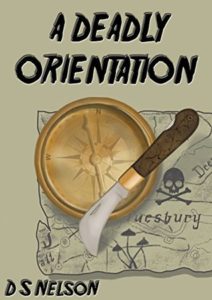 ‘… I was lost in a forest of assumptions and I needed co-ordinates to get to the truth.’
‘… I was lost in a forest of assumptions and I needed co-ordinates to get to the truth.’
Retired milliner Blake Hetherington has set himself up as a Private Investigator. Hetherington’s Mystery Millinery is now a reality and as always, archaeologist Miss Delilah Delibes and her boyfriend Detective Sergeant Claringdon are more than happy to help.
Geocachers, foragers, murderers and archaeologists all feature in this tale that finds our heroes on the trail of valuable missing artefacts. Together Blake and Delilah must unpick a mystery that dates back to the time of El Dorado. A tale of tragedy and deception, will Blake be able to solve the case before it’s too late.

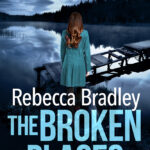
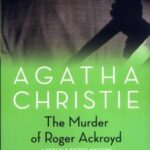
Thanks so much for having me over Rebecca, it’s great to look at how we all work and learn from each other.
I like that almost throwaway comment: I have been known to change whodunit… I can imagine the frantic changes and revisions that entails!
It does Marina, that’s true and yes there are some frantic rewrites lol. Swan on top, paddle like billy-o below 🙂
So delighted to see D.S. here!! And what a great series of answers to these questions. I’m another one who leaves manuscripts for a bit before revising them. It allows me to be more objective. Oh, and I know what it’s like to change the whodunit; I did that once, too. I respect what you had to go through there. Thanks for a fabulous interview, both!
Thanks Margot and yes maybe I was a little flipant with that comment but we often blank out trauma, don’t we 😉
Changing the killer would be a big change all right.
Hi Alex, it does. In that instant I’d actually written a few red herrings in already that pointed at the person I chnaged it to. I just made those a little less obvious. It usually happens as I’m writing it and the revision is tidying up the possible inconsistencies the change created, if that makes sense.
Wow, Dawn, you’ve actually changed whodunit? That must take a lot to rework the threads.
I also like your goal of writing a chapter a day. That’s definitely a good one to have.
It was great to learn more about your writing and revision process!
It was Mae, but it was worth it. I ended up with a better story. I also put quite a few red herrings in my books so actually the threads weren’t too bad when it came to stitching them a different way 🙂